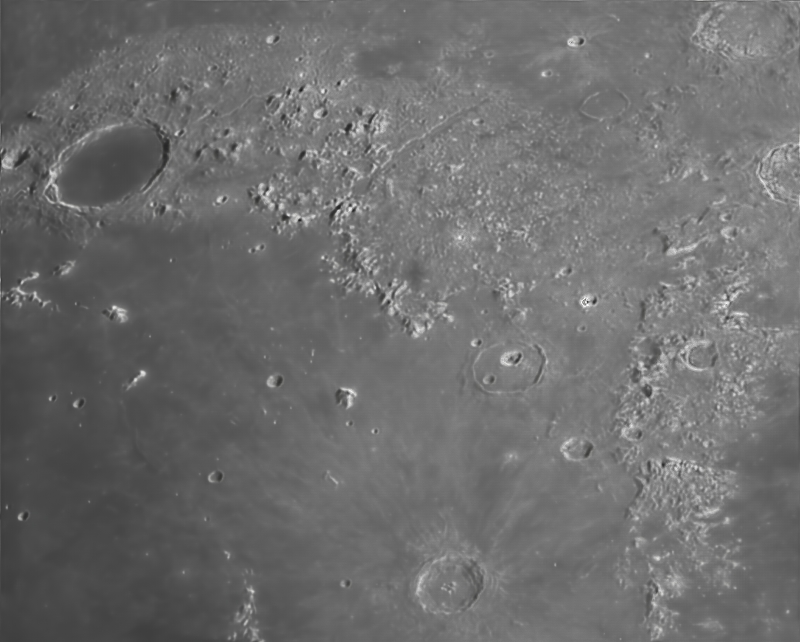Montes Alpes is a mountain range in the northern part of the Moon's near side. It was named after the Alps in Europe; the name was confirmed by the International Astronomical Union in 1935.
This range forms the northeastern border of the Mare Imbrium lunar mare. To the west of the range is the level and nearly featureless mare, while on the eastern face is a more rugged continental area with a higher albedo. The range begins about one crater diameter northwest of the crater Cassini, at the Promontorium Agassiz, then stretches about 280 kilometres to the northwest and continues in intermittent fashion and the mountains proper end shy of one crater length from the eastern rim of the dark-floored crater Plato. The system of rilles named Rimae Plato may be found in between the eastern edge of Plato and the western edge of the Alpes mountains. The peaks of the Alpes range in height from 1,800m to 2,400m.
The Alpes range was part of the middle ring of the multi-ringed Imbrium Basin. The other mountain ranges around the Imbrium Basin (Montes Caucasus, Montes Apenninus, and Montes Carpatus) were part of the outer ring. The Alpes, being part of the middle ring, thus have a shorter radius to the center of Imbrium than the other ranges of the basin.
The northwestern third of the range is separated from the remainder of the mountains by the Vallis Alpes, a wide rift valley that extends from a narrow cleft in the Montes Alpes to the northeast, reaching the edge of the Mare Frigoris. The total length of this formation is about 166 km, and it reaches a maximum width of 10 km.
About one-third the length of the range from the southeast is Mons Blanc, a peak rising to a height of 3.6 km. This compares to a typical height of peaks in this range of 1.8 to 2.4 km. Midway between Mons Blanc and Promontorium Agassiz is Promontorium Deville. To the southwest of Promontorium Agassiz is the isolated Mons Piton, a peak rising to a height of 2.3 km. Blanc, Piton, and the Montes Teneriffe make up part of the inner ring of the Imbrium Basin.
Montes Caucasus is a rugged range of mountains in the northeastern part of the Moon. It begins at a gap of level surface that joins the Mare Imbrium to the west with the Mare Serenitatis to the east, and extends in an irregular band to the north-northeast to the western side of the prominent crater Eudoxus. The range forms the northwestern boundary of the Mare Serenitatis. It forms a continuation of the Montes Apenninus range to the southwest.
There are several breaks in the range where nearby lunar mare has intruded into the formation, particularly near the southern tip. Embedded within the eastern flank of the range is the crater Calippus. Along the eastern flank to the south of Eudoxus is the remnants of the crater Alexander.
The range was named after the Caucasus Mountains on the Earth by the German selenographer Johann H. Mädler. However none of the peaks in this range has been assigned individual names, at least officially.

